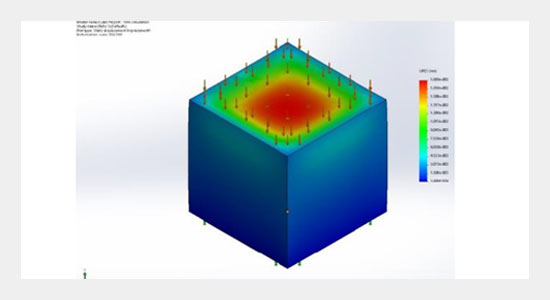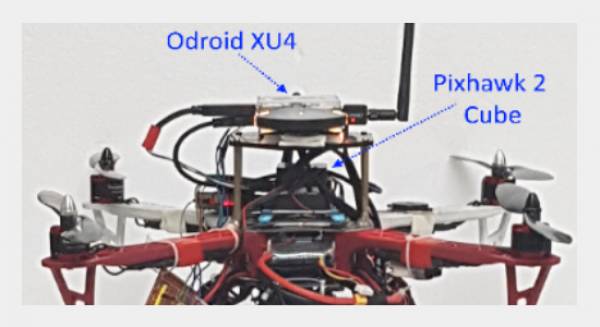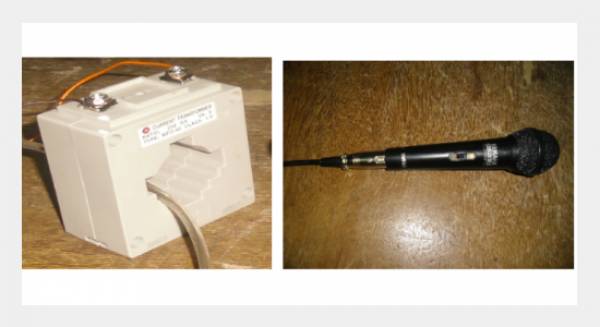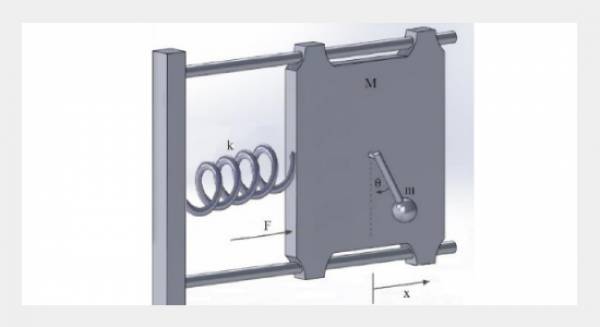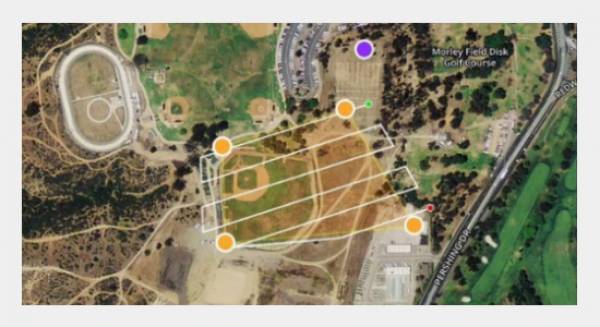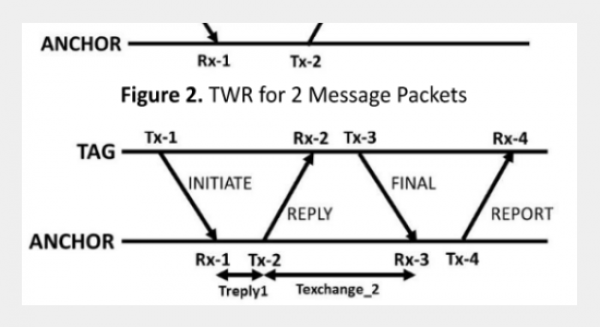Timothy Scott Chu1*, Von Eric Damirez1, Luzviminda de Ramos1, Hedrick Sipacio1, Leonardo Venancio Jr.1, and Alvin Y. Chua1 1Mechanical Engineering Department, De La Salle University, 2401 Taft Ave, Malate, Manila, 1004 Philippines
Download Citation:
|
Download PDF
Fused Deposition Modelling (FDM) is one of the widely utilized technology of low-cost 3D Printing. It uses plastic filament as material for Additive Manufacturing. To lessen the amount of filament consumption of the prints, modification of the infill patterns was conducted. This study focuses on the introduction of new infill pattern – the lattice infill to increase material efficiency of 3D prints, compared to conventional infill patterns. Benchmark designs such as the grid and cubic infill pattern were first created by the 3D printer slicing software. The proposed lattice infill design was created using a CAD software and rendered as STL file for compatibility with the slicing software. The three infill patterns were simulated in the slicing software to measure approximate product weight and the proposed design is simulated in an engineering simulation software to determine the stress performance and displacement when an external force is introduced. Results showed that the new infill pattern saves material up to 61.3% compared to conventional infill patterns. In effect, it increased the amount of prints produced per spool by 2.5 times. It is also found out that the lattice infill pattern print can resist to up to 1.6kN of compressive load prior to breaking.ABSTRACT
Keywords:
Additive manufacturing; Infill; Lattice.
Share this article with your colleagues
[1] M. Attaran, "The rise of 3-D printing: The advantages of additive manufacturing over traditional manufacturing," Business Horizons, vol. 60, pp. 681-682, 2017. https://doi.org/10.1016/j.bushor.2017.05.011 [2] C. Lubombo and M. A. Huneault, "Effect of infill patterns on the mechanical performance of lightweight 3Dprinted," Materials Today Communications, vol. 42, p. 214, 2018. https://doi.org/10.1016/j.mtcomm.2018.09.017 [3] J. Wu, N. Aage, R. Westermann and O. Sigmund, "Infill Optimization for Additive Manufacturing-Approaching Bone-Like Porous Structures," IEEE Transactions on Visualization and Computer Graphics , vol. 24, no. 2, p. 1127, 2018. https://doi.org/10.1109/TVCG.2017.2655523 [4] S. Henshaw, "3DPrinting," 16 September 2015. [Online].Available:https://3dprinting.com/tips-tricks/how-to-choose-an-infill-for-your-3d-prints/. [Accessed 5 December 2018]. [5] R. H. Sanatgara, C. Campagne and V. Nierstras, "Investigation of the adhesion properties of direct 3D printing of polymers and nanocomposites on textiles: Effect of FDM printing process parameters," Applied Surface Science, vol. 403, p. 856, 2017. https://doi.org/10.1016/j.apsusc.2017.01.112 [6] Martínez-Pellitero, Susana, M. A. Castro, Ana Isabel Fernández-Abia, S. González, and E. Cuesta, "Analysis of influence factors on part quality in micro-SLA technology," Procedia Manufacturing, vol. 13, p. 856, 2017. https://doi.org/10.1016/j.promfg.2017.09.143 [7] A. Covert, "CNNBusiness," 20 February 2014. [Online].Available:https://money.cnn.com/2014/02/20/technology/innovation/3d-printer-filament/index.html. [Accessed 5 December 2018]. [8] J. Fu, H. Li, L. Gao and M. Xiao, "Design of shell-infill structures by a multiscale level set topology optimization method," Computers & Structures, vol. 212, pp. 162-172, 2019. https://doi.org/10.1016/j.compstruc.2018.10.006 [9] R Huiskes, R Ruimerman, GH Van Lenthe, JD Janssen, "Effects of mechanical forces on maintenance and adaptation of form in trabecular bone," Nature, vol. 405, no. 6787, pp. 704-706, 2000. https://doi.org/10.1038/35015116 [10] MA Meyers, PY Chen, AYM Lin, Y Seki, "Biological materials: Structure and mechanical properties," Progress Mater. Sci., vol. 53, no. 1, pp. 1-206, 2008. https://doi.org/10.1016/j.pmatsci.2007.05.002 [11] UGK Wegst, H Bai, E Saiz, AP Tomsia, RO Ritchie, "Bioinspired structural materials," Nature Mater, vol. 14, no. 1, pp. 23-36, 2015. https://doi.org/10.1038/nmat4089 [12] Zichao Pan, Rujin Ma, Dalei Wang, Airong Chen, "A review of lattice type model in fracture mechanics: theory, applications, and perspectives," Engineering Fracture Mechanics, Vol. 190, pp. 382-409, 2018. https://doi.org/10.1016/j.engfracmech.2017.12.037 [13] H.J. Kima , K.I. Songb , H.S. Jungc , Y.W. Shind , J.H. Shin, "Performance evaluation of lattice girder and significance of quality control," Tunnelling and Underground Space Technology, Vol. 82, pp. 482-492, 2018. https://doi.org/10.1016/j.tust.2018.08.058 [14] "Ultimaker.com," Ultimaker, [Online]. Available: https://ultimaker.com/en/resources/20416-infill. [Accessed 9 December 2018]. [15]"SD3D,"[Online].Available:https://www.sd3d.com/wp-content/uploads/2015/10/MaterialTDS-ABS-Web.pdf?fbclid=IwAR1A3Drp2fdLMxEZaPhsXjQ4NMM3bPRWVPYt8WU829tjqpmMy1ycYdEOois. [Accessed 6 December 2018]. [16] "makerbot.com," [Online]. Available: https://downloads.makerbot.com/legal/MakerBot_R__PLA_and_ABS_Strength_Data.pdf?fbclid=IwAR1WGs3vYz-psI6hL4wC8NgDQ4Faodg0DDBHAqzJdb2dP9WeDWV02LCRgD8.REFERENCES
ARTICLE INFORMATION
Received:
2019-03-22
Accepted:
2019-06-27
Available Online:
2020-06-01
Chu, T.S., Damirez, V.E., de Ramos, L., Sipacio, H., Venancio Jr, L. and Chua, A.Y. (2020) Increasing Material Efficiency of Additive Manufacturing through Lattice Infill Pattern. Int. j. autom. smart technol. https://doi.org/10.5875/ausmt.v10i1.2140
Cite this article:
Copyright The Author(s). This is an open access article distributed under the terms of the Creative Commons Attribution-NonCommercial-NoDerivatives 4.0 International License.
